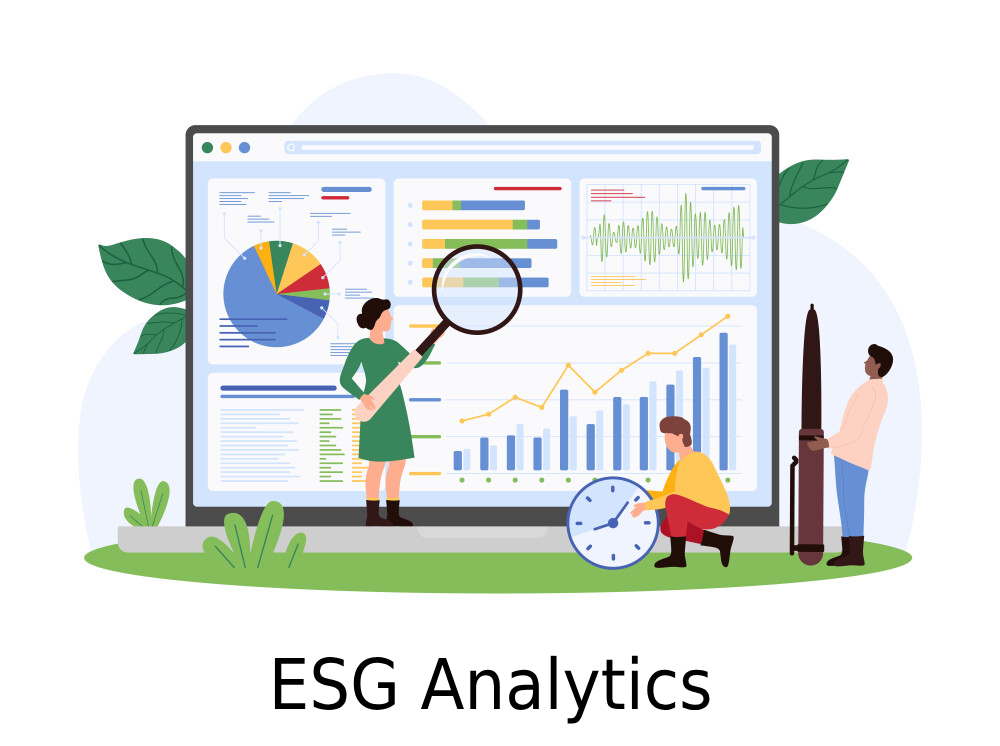In recent years, Environmental, Social, and Governance (ESG) factors have emerged as critical components of corporate strategy and investor decision-making.
As stakeholders increasingly demand transparency and accountability, organizations are turning to ESG analytics tools to enhance the quality of their data and produce flawless ESG reports.
This article delves into the significance of ESG analytics, how these tools ensure data quality, and their role in crafting impeccable ESG reports.
Understanding ESG Analytics
ESG analytics involves the use of advanced technologies to collect, process, and analyze data related to a company’s environmental, social, and governance practices.
These tools leverage big data, artificial intelligence, and machine learning to provide comprehensive insights into a company’s ESG performance.
By aggregating data from various sources, ESG analytics tools offer a holistic view of an organization’s impact, enabling stakeholders to make informed decisions.
Ensuring Data Quality with ESG Analytics
1. Data Collection and Integration
One of the primary challenges in ESG reporting is the collection and integration of data from disparate sources. ESG analytics tools streamline this process by automating data collection and integration.
They can pull data from internal systems, external databases, and third-party sources, ensuring that all relevant information is captured. This automation minimizes the risk of human error and ensures that the data is accurate and up-to-date.
2. Data Validation and Verification
Data quality is paramount in ESG reporting, as inaccurate or incomplete data can lead to misleading conclusions and reputational damage. ESG analytics tools incorporate robust validation and verification mechanisms to ensure the integrity of the data.
These tools cross-check data against predefined criteria and benchmarks, flagging any inconsistencies or anomalies. By doing so, they help organizations maintain high data quality standards and build trust with stakeholders.
3. Standardization and Normalization
ESG data often comes in various formats and units, making it challenging to compare and analyze. ESG analytics tools standardize and normalize data, converting it into a consistent format that can be easily compared across different metrics and time periods.
This standardization is crucial for generating accurate and meaningful insights, as it eliminates discrepancies and ensures that the data is comparable.
4. Real-time Monitoring and Reporting
ESG analytics tools offer real-time monitoring capabilities, allowing organizations to track their ESG performance continuously. This real-time data enables timely identification of issues and opportunities for improvement.
Moreover, these tools provide real-time reporting features, ensuring that stakeholders have access to the most current information. This level of transparency enhances the credibility of ESG reports and fosters stakeholder confidence.
Building Flawless ESG Reports with ESG Analytics
1. Comprehensive Data Coverage
A flawless ESG report requires comprehensive data coverage, encompassing all relevant ESG factors. ESG analytics tools excel in this aspect by aggregating data from diverse sources, including environmental metrics (e.g., carbon emissions, water usage), social indicators (e.g., employee diversity, community engagement), and governance practices (e.g., board composition, executive compensation).
This comprehensive coverage ensures that the ESG report provides a holistic view of the organization’s impact.
2. Advanced Analytics and Insights
ESG analytics tools go beyond data collection by offering advanced analytics capabilities. They employ machine learning algorithms to identify patterns and trends, enabling organizations to gain deeper insights into their ESG performance.
For instance, these tools can analyze the correlation between different ESG factors and financial performance, helping organizations understand the financial implications of their ESG initiatives. Such insights are invaluable for crafting a compelling ESG narrative.
3. Customizable Reporting Frameworks
Every organization has unique ESG priorities and reporting requirements. ESG analytics tools offer customizable reporting frameworks that allow organizations to tailor their ESG reports to their specific needs.
These tools provide flexibility in choosing the metrics, benchmarks, and reporting formats, ensuring that the ESG report aligns with the organization’s goals and stakeholder expectations. Customizable frameworks also facilitate compliance with various ESG reporting standards and regulations.
4. Enhanced Transparency and Accountability
Transparency and accountability are the cornerstones of effective ESG reporting. ESG analytics tools enhance these aspects by providing a clear and auditable trail of data.
They document the data sources, methodologies, and assumptions used in the analysis, ensuring that the ESG report is transparent and verifiable. This level of transparency builds trust with stakeholders and demonstrates the organization’s commitment to responsible practices.
5. Benchmarking and Peer Comparison
ESG analytics tools enable organizations to benchmark their ESG performance against industry peers and best practices.
By comparing their performance with that of similar companies, organizations can identify areas where they excel and areas that require improvement.
This benchmarking process provides valuable context for the ESG report, showcasing the organization’s achievements and highlighting its commitment to continuous improvement.
Conclusion
In the era of sustainability and responsible investing, ESG analytics tools have become indispensable for organizations seeking to enhance data quality and produce flawless ESG reports.
By automating data collection, validation, and standardization, these tools ensure the accuracy and reliability of ESG data.
Moreover, their advanced analytics capabilities and customizable reporting frameworks empower organizations to gain deep insights and communicate their ESG performance effectively.
As stakeholders demand greater transparency and accountability, ESG analytics software will continue to play a crucial role in shaping the future of ESG reporting.



